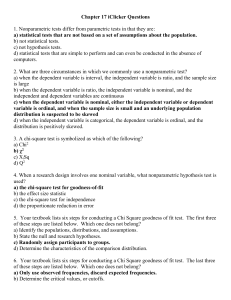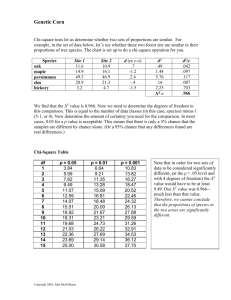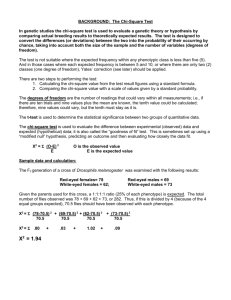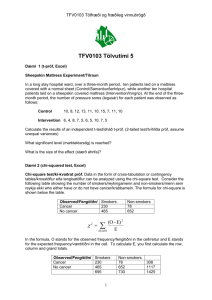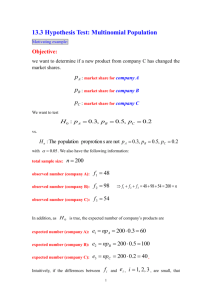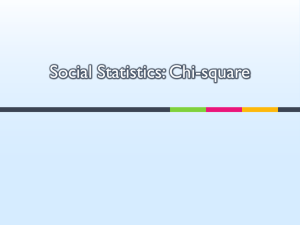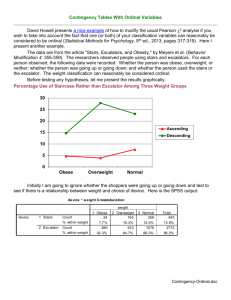Chapter 17 Chi Square - Azusa Pacific University
advertisement
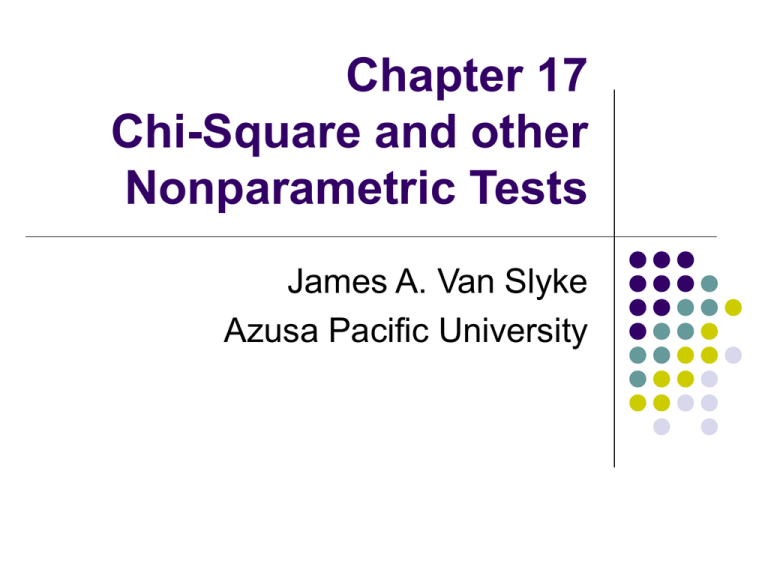
Chapter 17 Chi-Square and other Nonparametric Tests James A. Van Slyke Azusa Pacific University Distinctions between Parametric and Nonparametric Tests Parametric tests (e. g. t, z) depend substantially on population characteristics Nonparametric tests depend minimally on population parameters Fewer requirements Often referred to as distribution free tests Advantages for parametric tests Generally more powerful and versatile Generally robust to violations of the test assumptions (sampling differences) Chi-Square (χ2) Single Variable Experiments Often used with nominal data Allows one to test if the observed results differ significantly from the results expected if H0 were true Chi-Square (χ2) Single Variable Experiments Computational formula obt 2 fo fe 2 fe where f o the observed frequency in the cell f e the expected frequency in the cell (if H 0 were true) = summation over all cells Chi-Square (χ2) Single Variable Experiments Evaluation of Chi-Square obtained Family of Curves Vary with degrees of freedom k-1 degrees of freedom where k equals the number of groups or categories The larger the discrepancy between the observed and expected results the larger the value of chi-square, the more unreasonable that H0 is accepted If 2 obt 2 crit , reject H0 Chi-Square: Test of independence between two variables Used to determine whether two variables are related Contingency table This is a two-way table showing the contingency between two variables The variables have been classified into mutually exclusive categories and the cell entries are frequencies Chi-Square: Test of independence between two variables Null hypothesis states that the observed frequencies are due to random sampling from a population This population has proportions in each category of one variable that are the same for each category of the over variable Alternative hypothesis is that these proportions are different Chi-Square: Test of independence between two variables Calculation of chi-squared for contingency tables obt 2 fo fe 2 fe fe can be found by multiplying the marginals (i.e. row and column totals lying outside the table) and dividing by N Sum (fo – fe)2/fe for each cell Chi-Square: Test of independence between two variables Evaluation of chi-square df = number of fo scores that are free to vary While at the same time keeping the column and row marginals the same Equation df = (r – 1)(c – 1) Where r = number of rows in the contingency table c = number of columns in the contingency table If 2 obt 2 crit , reject H0


